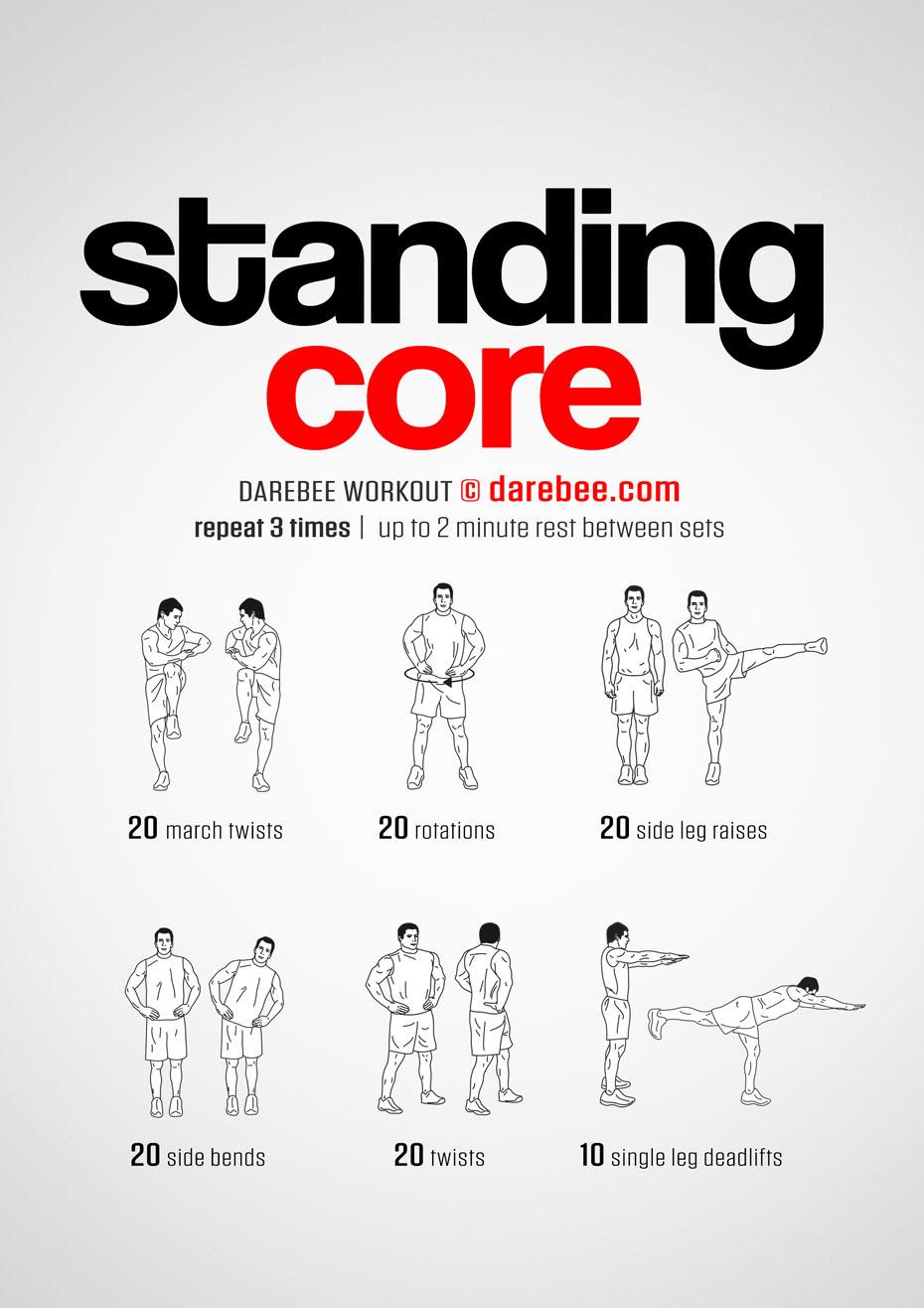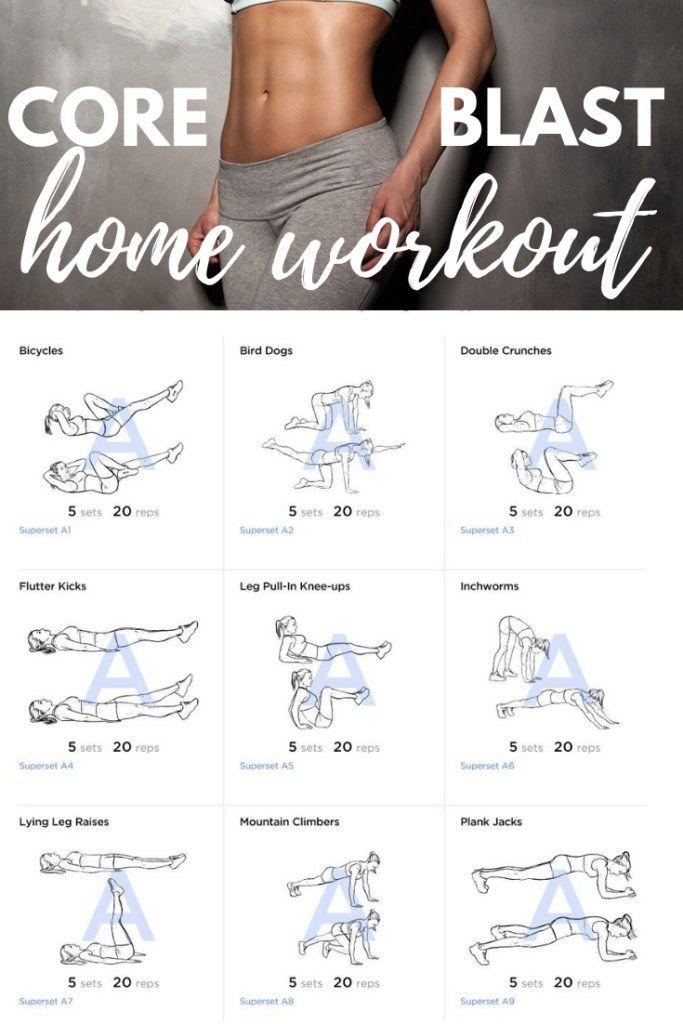Have you ever found yourself scrolling through fitness videos, wishing you could achieve that toned core without having to step foot in a gym? You’re definitely not alone! Many of us juggle busy schedules, home responsibilities, and fitness goals, making it tough to find time for a workout. But the good news is, you can absolutely strengthen your core right at home with just a few simple exercises. In this article, we’ll explore effective home workouts tailored specifically for your core, address common challenges you might face, and share tips to keep you motivated. So, if you’re ready to discover practical and enjoyable ways to get that strong core you’ve been dreaming about, stick with us—you won’t want to miss what we have in store!
Understanding the Importance of Core Workouts in Home Fitness
Core workouts are often overlooked in home fitness routines, yet they serve as the foundation of overall strength and stability. Imagine standing tall, feeling balanced and agile as you engage in everyday activities—whether it’s lifting groceries or playing with your kids. That’s the magic of a strong core. It’s not just about aesthetics; strong core muscles can improve posture, enhance athletic performance, and even contribute to better mental health. Engaging in regular core workouts helps in preventing injuries and supports the spine, which can be transformative not just for athletes but for anyone wanting to lead an active life.
Let’s challenge the common misconception that core training is strictly about abdominal workouts. While crunches and planks are popular staples, your core encompasses much more. It includes muscles in your back, hips, and pelvis—essentially anything that stabilizes you from the torso down. Have you considered incorporating exercises like Russian twists, bird dogs, or supermans into your routine? These moves engage various muscle groups, promoting functional strength that translates into all aspects of daily living. According to a study published by the American Council on Exercise, participants who engaged in diverse core-targeting exercises reported improved performance in activities they hadn’t even expected, such as running and cycling. Now that’s a win-win!
To truly harness the benefits of core workouts at home, aim for variety and progression. Start by setting aside just 10 minutes a few times a week for focused core exercises. As your strength builds, gradually increase the difficulty by adding weights or extending the duration of your workouts. Consider using resources from platforms like the NSCA (National Strength and Conditioning Association) to tailor your routine. The key here is consistency paired with a willingness to experiment; there’s no one-size-fits-all approach. Why not track your progress with a simple fitness journal or an app? Documenting these small victories can keep your motivation high. So, the next time you’re planning your home workout session, remember to bring your core along for the ride!

Essential Equipment for Effective Core Exercises
When it comes to core workouts at home, the equipment you choose can make all the difference between a lackluster exercise session and one that leaves you feeling strong and accomplished. While your body is the most powerful tool in your fitness arsenal, a few essential items can amplify your training. Resistance bands are a fantastic option; they’re versatile, portable, and perfect for targeting those hard-to-reach muscles in your core. With just a band, you can perform exercises like Russian twists or woodchoppers that challenge your stability and engage your entire torso. Ever tried adding resistance to your planks? It’s a game-changer!
Another underrated piece of equipment that deserves a spot in your home gym is the stability ball. Not only does it serve as a makeshift desk chair to improve your posture, but it also turns simple movements into full-body workouts. Think about it: when you balance on a stability ball, your core is constantly engaged to keep you stable, making every crunch or bridge that much more effective. Plus, it’s kind of fun! Try rolling the ball under your lower back during crunches; you’ll instantly notice how much more engaging the exercise becomes.
Lastly, don’t overlook the power of a mat—not just any mat, but one that provides enough cushioning for those floor exercises. A well-cushioned surface can drastically improve your workout experience, especially during extended sessions. Imagine doing leg raises or planks on a hard floor; not only is it uncomfortable, but it can also lead to unnecessary strain. Investing in a high-quality mat encourages longer workouts and more consistency. Remember, the key to effective core workouts isn’t just about pushing through; it’s about supporting your body properly. By incorporating these tools, you’ll not only enhance your core training but also build a strong foundation for all your fitness goals.

Top Bodyweight Exercises to Strengthen Your Core at Home
When it comes to core strength, many people might think of endless crunches or fancy gym machines, but the reality is that some of the most effective workouts require nothing but your body and a little creativity. Imagine you’re at home, ready to dive into a core routine that’s both engaging and beneficial. Bodyweight exercises like planks and mountain climbers can not only build core strength but also improve your stability and posture, which is crucial for daily activities. Have you ever noticed how simply doing a plank can make you feel like a statue, forcing your entire core to engage? That’s the beauty of it—you’re not just working out; you’re sculpting strength from the inside out.
Let’s talk about leg raises. They might seem simple, but they pack a punch when targeting the lower abdominal muscles. If you want to mix things up, try adding a twist by doing flutter kicks or reverse crunches—they’re fantastic yet often overlooked variations. What if you add a pause at the top of each raise? It challenges your muscles differently and encourages further engagement. This is where the real magic happens—research shows that consistently working these muscles improves not just aesthetics but also athletic performance and overall functional fitness (source: NCBI).
Now, consider incorporating dynamic movements into your core routine. Exercises like burpees and spiderman planks not only target your abdominal muscles but also elevate your heart rate, making them excellent for both strength and cardio. Isn’t it amazing how a simple motion like bringing your knee to your elbow can elevate your workout and make it feel less mundane? Just remember, the key to effective core training is variety—switching up exercises keeps your body guessing and helps you avoid plateaus. Tapping into core routines like these turns every corner of your home into a personal gym, and the best part? You’re fitting core strength seamlessly into your day-to-day life without needing fancy equipment. Let’s get moving!

Creating a Balanced Home Workout Routine for a Stronger Core
Have you ever considered how pivotal your core strength is to your overall fitness? Think about the countless activities we perform daily—lifting groceries, playing with kids, or even just sitting at your desk. All of these movements rely on a strong core! Unlike the common misconception that core workouts are solely about endless crunches, creating a balanced home routine dives deeper. It should encompass a variety of muscle groups, addressing everything from stability to rotational strength. Imagine incorporating planks, bird-dogs, and Russian twists; these exercises engage multiple core muscles while promoting functional strength that translates into your everyday life.
To really optimize your home workouts, aim for a mix of exercises that challenge your core in different ways. Consider this: performing a plank engages your anterior core, while doing side planks targets your obliques, and mountain climbers introduce a dynamic element that boosts your heart rate. Here’s a simple weekly plan to get you started:
- Monday: Plank Variations (front, side, and reverse)
- Wednesday: Stability Work (bird-dogs and single-leg deadlifts)
- Friday: Dynamic Movements (mountain climbers, medicine ball slams)
Isn’t it fascinating how just a few targeted sessions a week can significantly enhance your core strength? Research indicates that a strong core not only improves athletic performance but also decreases the risk of injury (you can read more about it from the Journal of Sport Rehabilitation). By committing to a balanced routine, you’ll find yourself moving with more agility and power, regardless of your fitness level. Plus, integrating different movements keeps things fresh and engaging, snatching your attention from the sometimes monotonous routines that can lead to burnout.

Tips for Staying Motivated and Tracking Your Core Workout Progress
Staying motivated during your core workouts can sometimes feel like a Herculean task. It’s easy to start strong, but when the initial excitement fades, what keeps you going? One effective strategy is to set specific, measurable goals for yourself. Instead of saying, “I want a stronger core,” try something more tangible, like, “I want to hold a plank for two minutes by the end of the month.” This gives you a clear target and allows you to celebrate milestones along the way. Tracking your progress—whether through a workout journal, an app, or a simple calendar—can turn that two-minute plank into something to look forward to, rather than a daunting challenge. Consider celebrating your small wins, like completing an extra set or mastering a new exercise; these moments can provide the fuel you need to keep pushing forward.
Another powerful motivator lies in finding community support. Whether it’s joining an online fitness group, partnering with a friend for virtual sessions, or engaging with social media fitness challenges, surrounding yourself with others who share the same commitment to their core workouts can be incredibly inspiring. Research indicates that having a support system can enhance accountability and motivation, making it less likely for you to skip a workout. Plus, you can exchange tips, share progress, and even get advice on overcoming fitness plateaus. Remember when you saw someone post about their impressive transformation? Use that energy to drive your own goals and stay in the zone. The added layer of accountability makes it harder to bail out on your workout, especially when you know others are cheering you on!
never underestimate the power of variety to keep your routine fresh and engaging. Your core muscles are diverse, and so should be your workouts! Incorporating different forms of exercise—like Pilates, yoga, or even dance—can not only help you stay motivated but also encourage balanced muscle development. Spice up your routine with new moves that challenge your stability, such as stability ball exercises or resistance band workouts. This approach not only keeps your interest piqued but also helps you avoid plateaus. Plus, mixing things up keeps your muscles guessing, leading to better overall strength gains. As you explore new workouts, keep a log of your favorite exercises and progress; you just might discover a new passion that reignites your commitment to home workouts!
The Bottom Line
As we’ve explored, building a strong core through home workouts not only enhances your physical fitness but also boosts your overall well-being. With a variety of exercises at your fingertips, even a short routine can make a significant difference in your strength and stability. I encourage you to choose a few movements that resonate with you and incorporate them into your daily routine—whether it’s a quick morning session or a mid-day break. Think about how you felt after your last workout; that sense of achievement is just a few reps away! Share your experiences and favorite routines in the comments—your insights might inspire someone else on their fitness journey. Remember, every small step you take toward strengthening your core is a victory worth celebrating. Embrace the challenge, stay consistent, and let your progress spark a newfound energy in all aspects of your life!





